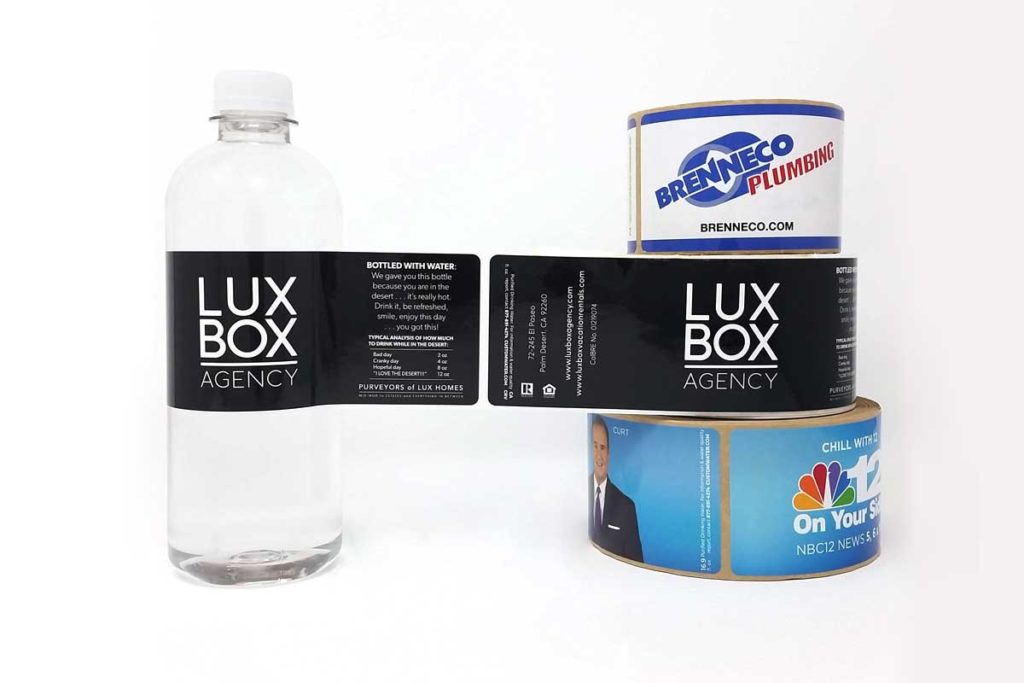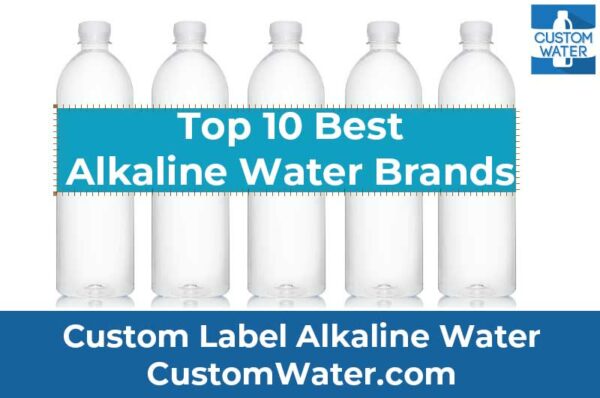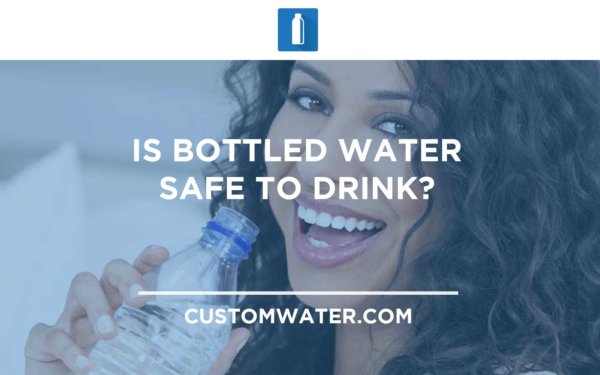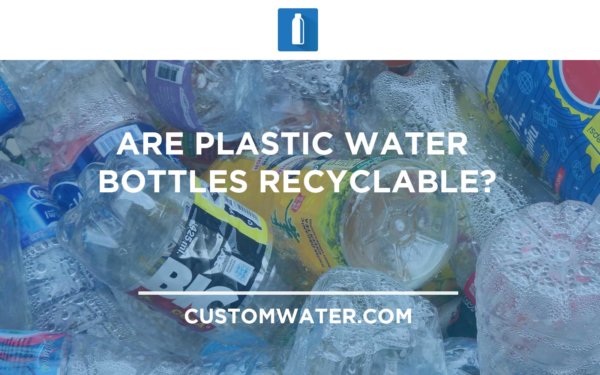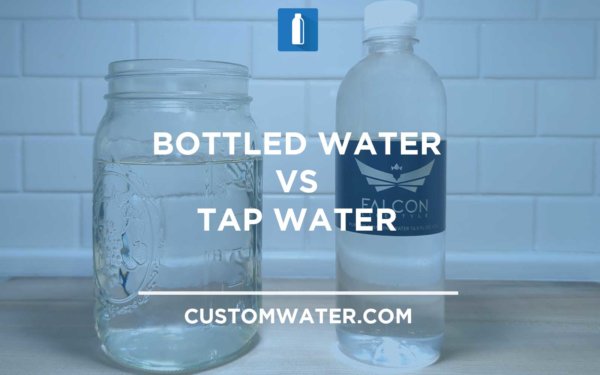Although there are many different types of bottled water, reverse osmosis bottled water is rapidly gaining popularity. More and more people are purchasing bottled water every day.
The reverse osmosis purification process is fast, efficient, and has no environmental impact. It has many advantages that set it apart from other water purification processes that most bottled water brands use.
So let’s dive into the many advantages and disadvantages that reverse osmosis systems can offer when compared to other similar methods used to purify water.
Quick note: If you are interested in high quality reverse osmosis water bottles with your own private label, we would be happy to help. Just drop us a note and we can discuss the options.
What Is Reverse Osmosis Water and How Does It Work?
Reverse osmosis water (RO) is a multi stage filtration system used to remove contaminants and other harmful chemicals from the water. However, since the RO filtration process is very efficient, it also removes mineral content from the water.
Overall, the RO system is great at making drinking water from dirty or contaminated water, but it also removes several good things from the water that are beneficial to our health.
Because of this, RO water is often remineralized to add back many of the minerals removed, turning it from regular drinking water into healthy water.
The Production and Treatment Process of Reverse Osmosis
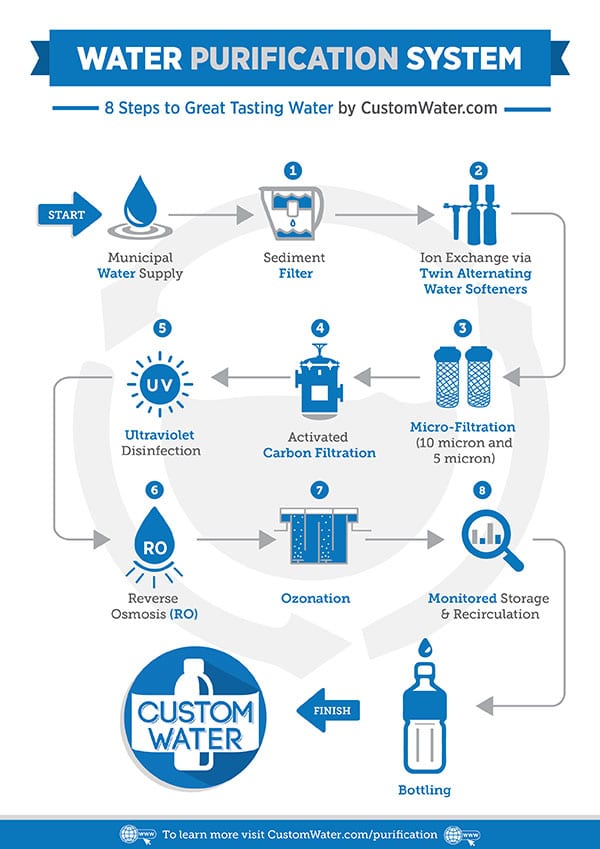
The RO purification process involves running water across a filtration process to get purified water. The process requires high pressure to push the water through a semipermeable membrane to remove contaminants, harmful chemicals, and bacteria.
When the water goes through the permeable membrane by applying pressure, it removes viruses, bacteria, and chemicals with high efficiency. The membrane efficiently removes toxic chemicals and reduces the total dissolved solids in the water, improving taste and smell.
The purification process results in contaminant-free water, which many brands of bottled water then use to add minerals to make their brand unique.
Since RO purified water removes dissolved solids from the water, it’s important to add some minerals back into the RO water to improve the water quality after the water purification process.
There are many different ways to get the most out of your own water by using different remineralization methods. Here are a few:
Mineral Drops
Himalayan Salt
Alkaline Water Filter Pitcher
Mineral Stones
Trace Mineral Drops
Mineral Cartridge
Any of these methods can turn regular bottled water into healthy water. They’re all great ways to improve RO water.
Additionally, you can easily add mineral stones, mineral drops, or Himalayan salt to one gallon of water to have a huge supply of mineralized water at your disposal.
Benefits of Drinking Reverse Osmosis Bottled Water

Even though the reverse osmosis purification process removes many minerals and beneficial things from the water, RO water still offers many benefits on its own.
Improved Taste
The reverse osmosis filtration system removes bacteria, viruses, and chemicals from the water. These contaminants negatively impact the water’s good taste and odor.
RO purified water offers a better taste than unfiltered or tap water, while also being safer to drink.
Healthier Option
Because reverse osmosis removes all contaminants from the water, it significantly improves your safety when drinking water.
It allows anyone to stay hydrated by drinking water from a safer and healthier source.
Better for Cooking
RO purified water can add a refreshing taste and great smell to your food.
A good reverse osmosis filtration system also allows you to use tap water to cook, speeding up the cooking process with higher volumes of water than a regular filter.
Environmental Friendliness
Using a filtration process like reverse osmosis is an environmentally friendly way to get purified water.
You can either have a filter installed under your sink to use tap water or use refillable water bottles instead of plastic bottles to reduce waste.
Does All Bottled Water Use Reverse Osmosis?
Not every bottled water can be called reverse osmosis bottled water. There are many different types of bottled water, like:
-
Spring water
-
Mineral water
-
Purified water
-
Distilled water
These different bottled water types can significantly vary depending on their source. For instance, spring water is naturally pure, requiring little to no filtration before you can drink it. There are also many different purification processes other than reverse osmosis, like ozonation, distillation, or micron filtration.
Reverse Osmosis vs. Spring Water
Spring water is naturally filtered by running underground across the earth’s surface. It often requires little to no treatment since the underground can remove more impurities than many purification methods.
However, reverse osmosis is a process that purifies dirty or contaminated water. It’s a treatment process to use on dirty or contaminated water, unlike spring water, which is already purified water.
Additionally, reverse osmosis removes many minerals and other healthy things from the water. Meanwhile, spring water is naturally infused with many minerals and other things that improve our health.
Reverse Osmosis vs. Mineral Water
Mineral water, much like spring water, also comes from underground sources running through caves and other systems. The water is naturally infused with many minerals, like calcium, magnesium, and potassium.
The purified water running underground also passes through many minerals that get infused into the water, with at least 250 parts per million (ppm) of dissolved minerals and trace elements. This is why the water has a unique and distinct refreshing taste.
In comparison, RO water is also purified, but the filtration process completely removes minerals from the water. So unless you remineralize RO water, using reverse osmosis to purify water from mineral deposits is counterproductive.
Reverse Osmosis vs. Distilled Water
Distilling water results in water similar to that produced by reverse osmosis.
The process of distillation involves heating up the water to its boiling point. Then, when the water evaporates, the steam is collected in another container, where condensation turns it back into water. Meanwhile, the solids and impurities are left behind since the steam won’t carry the solids.
As a result of distillation, the water has a higher quality and a higher purity level than RO water.
Reverse osmosis purified water results in similar purity levels but uses a semipermeable membrane to filter impurities and solids instead.
Reverse Osmosis vs. Tap Water
Tap water comes from a municipal water source, which is treated with many chemicals to remove impurities and neutralize toxins.
However, municipal water might still contain many undesirable solids and chemical traces of the products used to sterilize the water. In many cases, tap water lacks minerals, making it one of the worst and most inconsistent sources of water.
Many of the chemical traces remaining in the water also make it taste and smell bad. Because of this, tap water is often not the best option for drinking or cooking.
By combining reverse osmosis technology with tap water, we can remove whatever else is left from other contaminants that the chemicals couldn’t remove, as well as the chemicals left in the water. The resulting RO significantly improves tap water’s quality.
Reverse Osmosis vs. Alkaline Water
When the water is alkaline, it means it has a higher pH level than regular water from other sources. For water to be considered alkaline, it must have a pH level of 7.5 or higher.
Not all natural sources of water are equal. In places where acid rains are frequent, the natural pH of water can be considerably lower than average, resulting in acidic water instead of alkaline.
By using reverse osmosis, purified water can have its pH level lowered due to the removal of solids from the water. Although many impurities cause water to be less alkaline, reverse osmosis also removes minerals, which increase alkalinity.
Reverse Osmosis vs. Ozonated Water
Ozonated water uses a type of UV filtration system to create ozone gas from oxygen and then infuse it into the water to sterilize it. The process has a huge downside, which is its initial cost for expensive equipment.
The ozone sterilization is extremely efficient at killing viruses and bacteria present in water, but it doesn’t remove solids from it like the other methods. This means that ozonated water can keep a lot of its original minerals, but also other solids that bring impurities with them.
Ozonated water is a great option for sterilization of other things like fruits, vegetables, work surfaces, tools, and equipment. However, because it can contain other unwanted substances, it’s often not the best option for drinking water.
RO water, on the other hand, is great for drinking because the process removes solids and other things like viruses and bacteria.
Top 5 Popular Bottled Water Brands Using Reverse Osmosis
Currently, bottled water is in high demand because drinking bottled water is healthier than drinking regular water or tap water.
Due to the high demand, there are many brands selling a variety of different types of bottled water. So let’s take a look at the best brands of bottled water that sell RO water.

1. Smartwater
The Smartwater brand is owned by Coca-Cola and is known for using reverse osmosis to purify its water. They use a multi-step purification process that uses vapor distillation after the reverse osmosis process. After being purified, Smartwater enhances its water by adding a balanced blend of electrolytes for a fresh taste. In addition, they also offer a range of bottled water options, like sparkling and alkaline.2. AQUAhydrate
This brand is so popular that there are many celebrities endorsing it, like Mark Wahlberg and Sean “Diddy” Combs. AQUAhydrate treats their bottled water using reverse osmosis, followed by ozonation for sterilization. After the water is treated, AQUAhydrate adds electrolytes and minerals to the water, increasing its quality and raising the pH to 9 or higher. AQUAhydrate packages their water in plastic bottles with a stylish logo glued into their water bottles.3. Essentia Water
Essentia Water is a bottled water brand that commits to its goal of providing high-quality purified water. They use reverse osmosis and micro filtration to produce sterilized water with high purity. Then, they add a proprietary blend of electrolytes and minerals to increase the pH to 9.5. Essentia Water also uses ionized alkaline water to significantly increase their product’s quality, setting them apart from other bottled water brands. The brand also has a sleek logo on their water bottle with a unique design.4. Dasani
Dasani is another great brand of bottled water owned by Coca-Cola. The brand uses RO filtration to purify the water and then adds minerals to enhance the taste. Additionally, the brand has a commitment to sustainability. They use a plant-based water bottle designed to reduce environmental impact, as well as aluminum cans for recycling.5. Aquafina Water
Aquafina Water is owned by PepsiCo and is one of the most popular choices for reverse osmosis bottled water. Their water goes through reverse osmosis, UV filtration, and then ozone disinfection. Aquafina adds a trace amount of minerals to their purified water to improve the taste. They also have a focus on sustainability by using recyclable bottles and promoting responsible water stewardship.Conclusion

Overall, reverse osmosis is a great and efficient process to purify water of many contaminants, chemicals, and solids.
The water purification process is so effective that many popular brands use it to sell their bottled water. Although the process removes minerals, many brands offer their own unique blend of minerals and electrolytes to improve the water and remineralize it. Some brands even offer artificial flavors that stand out from the rest.
If you’re looking to make your own water and spread awareness of your brand using water bottles, we can help you. Order your custom water bottle label right now at Custom Water.
Reverse Osmosis Water FAQ
Reverse osmosis water is purified through a filtration process that removes many solids and chemicals but also minerals.
Yes, reverse osmosis water is completely safe, since the process removes harmful chemicals from the water.
The reverse osmosis process purifies the water by filtering the dissolved solids in it. This means that minerals also get removed.
No, not every bottle of bottled water is made by reverse osmosis. It’s important to check the label before buying bottled water to know its source.
Reverse osmosis water can be used in aquariums. However, it’s necessary to properly remineralize the water.
Since RO water is free from contaminants, plants can thrive with it. However, it’s ideal to remineralize the water before using it on plants so they can have improved growth.
Generally, pre-filters should be replaced every 6–12 months, RO membranes every 2–3 years, and post-filters annually. Always follow the manufacturer’s recommendations for your system.
RO water can be acidic because it removes minerals that improve alkalinity. However, there are filters that remineralize the water to bring the pH back up.
It varies depending on many factors. But generally, home systems can range from $150 to $600 for the initial purchase, while commercial systems can cost thousands of dollars.

